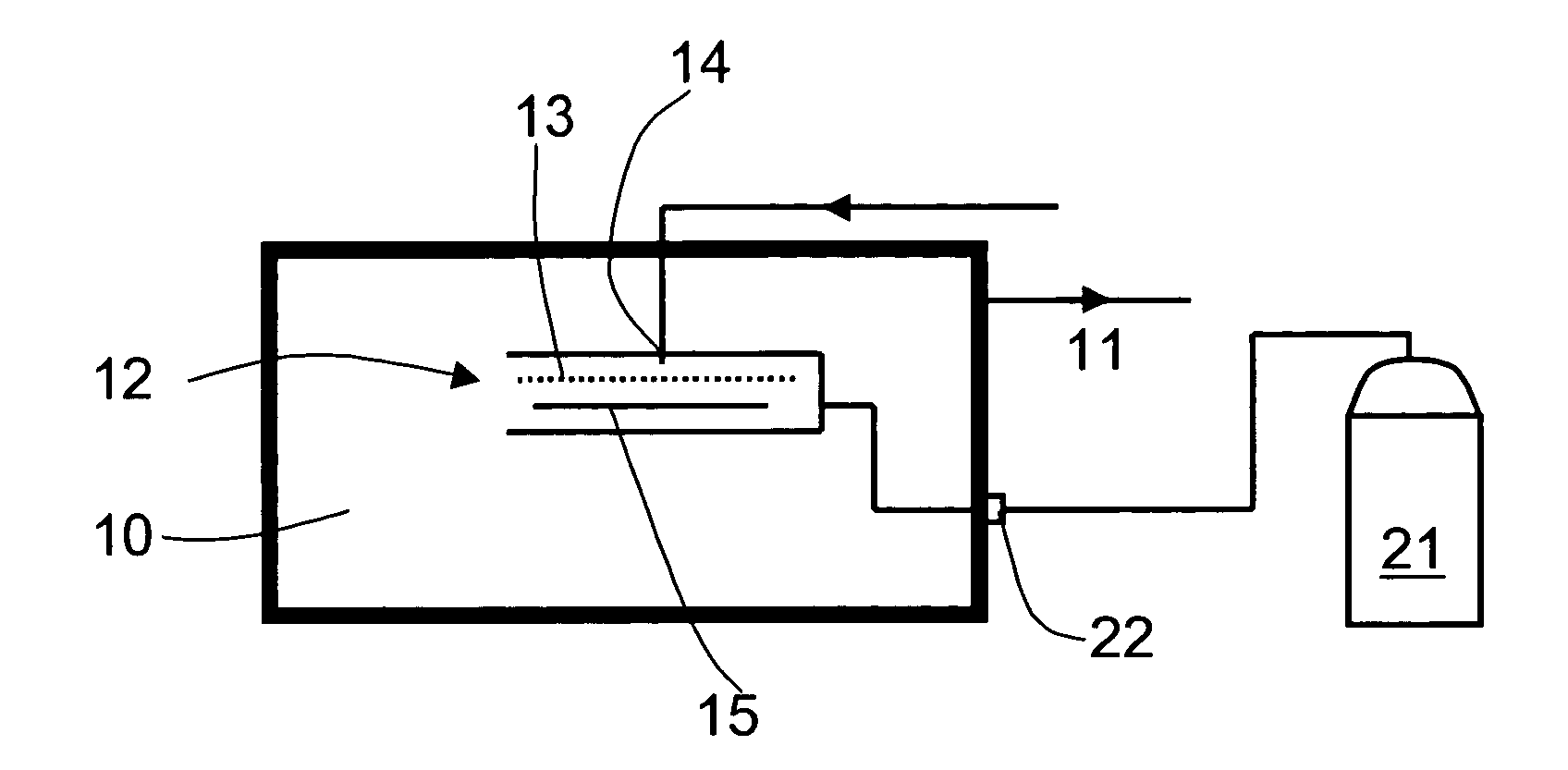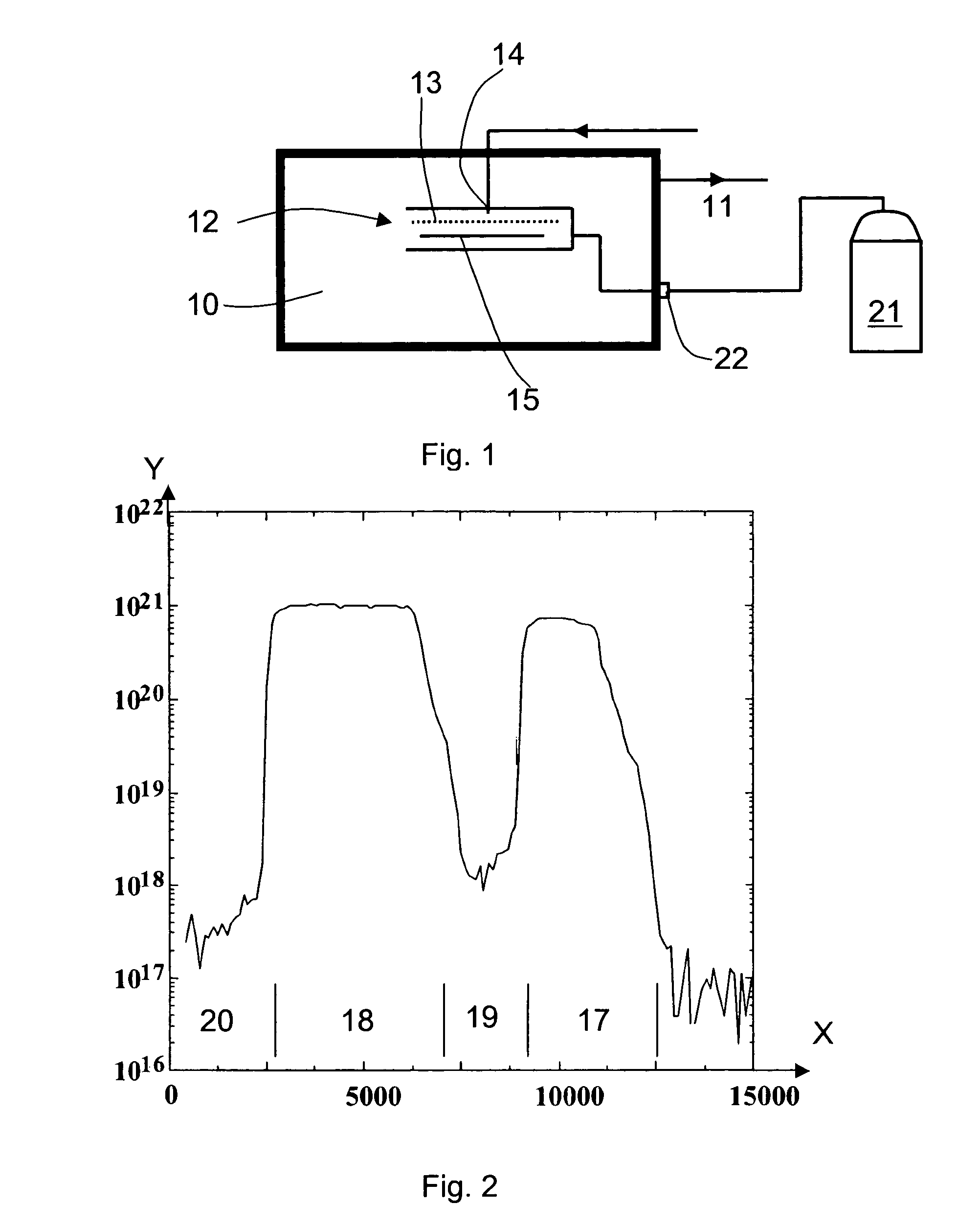Method for producing semi-conducting devices and devices obtained with this method
- Summary
- Abstract
- Description
- Claims
- Application Information
AI Technical Summary
Benefits of technology
Problems solved by technology
Method used
Image
Examples
first embodiment
[0038]Therefore, according to the invention, after the deposition of the p-layer and before the deposition of the i-layer, the internal surfaces of the reactor and the substrate also are dosed with a vapour or a gas comprising water, methanol or isopropanol or another alcohol.
[0039]More precisely, in this example, the dosing product is stored in a separate bottle 21 connected, via a valve 22, to the vacuum chamber 10, which is kept at low pressure condition. When the valve 22 is opened, the dosing product starts boiling in the bottle 21 because of the low pressure inside and vapour flushes into the chamber 10. Of- course, the RF electrode 13 is off. The operation is performed between 100 and 350° C., typically at 200° C. and during less than 10 minutes, typically 2 minutes and at 0.05 to 100 mbar. The flow of water vapour has to be sufficient. For example, 90 mbar.sec is a good value. If methanol or isopropanol is used, the flow is generally higher.
[0040]After the dosing operation, ...
second embodiment
[0050]According to the invention, after the deposition of the p-layer and before the deposition of the i-layer, the internal surfaces of the reactor are dosed with a vapour or gas comprising ammonia, hydrazine or volatile organic amines. This dosing operation is performed at low pressure conditions (0.05 to 100 mbar), between 100 and 350° C., typically at around 200° C. and during less than 10 minutes, typically around to 2 minutes. The flow of gas has to be sufficient. For example, 90 mbar.sec is a good value for ammonia. After the dosing operation, a short pumping period of less than 5 minutes is also respected before the deposition of the i-layer.
[0051]A nitrogen peak can be observed with a SIMS analysis at the treated n-i interface, meaning that such a treatment has been used. Typically, the amount of nitrogen is higher than 1019 atoms.cm−3.
[0052]For both embodiments of the invention, it may be useful to depose on the p-layer, after the above described treatments, a hydrogen-dil...
PUM
| Property | Measurement | Unit |
|---|---|---|
| Temperature | aaaaa | aaaaa |
| Temperature | aaaaa | aaaaa |
| Pressure | aaaaa | aaaaa |
Abstract
Description
Claims
Application Information
 Login to View More
Login to View More - R&D
- Intellectual Property
- Life Sciences
- Materials
- Tech Scout
- Unparalleled Data Quality
- Higher Quality Content
- 60% Fewer Hallucinations
Browse by: Latest US Patents, China's latest patents, Technical Efficacy Thesaurus, Application Domain, Technology Topic, Popular Technical Reports.
© 2025 PatSnap. All rights reserved.Legal|Privacy policy|Modern Slavery Act Transparency Statement|Sitemap|About US| Contact US: help@patsnap.com


